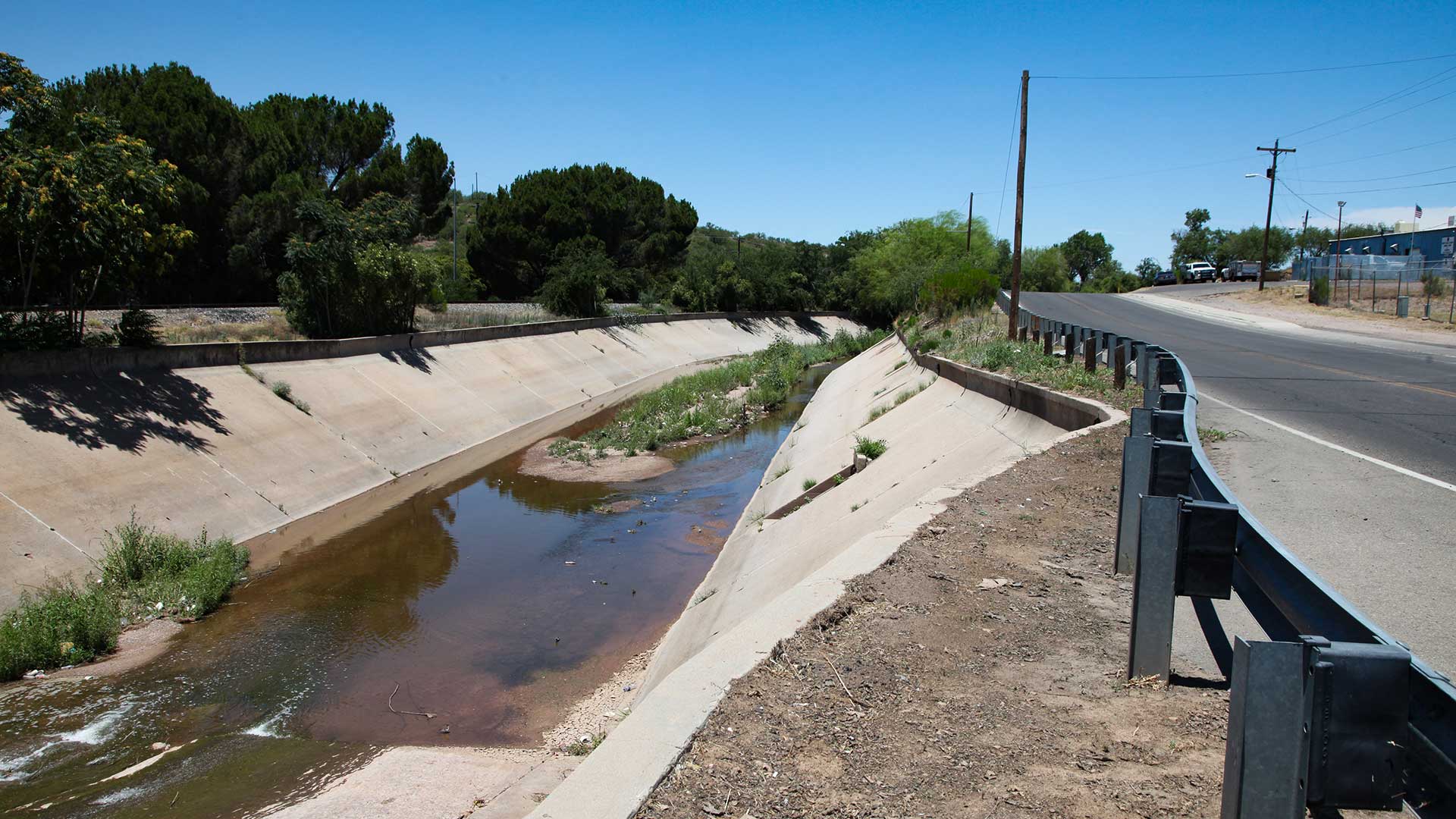 The International Outfall Interceptor, or IOI, runs under this concrete-lined wash through the city of Nogales, Ariz.
The International Outfall Interceptor, or IOI, runs under this concrete-lined wash through the city of Nogales, Ariz.
Nogales Wastewater

The international outfall interceptor, or IOI, is the cross-border pipe that carries 12 to 14 million gallons of sewage daily from Nogales, Sonora, and Nogales, Arizona, to a treatment plant in Rio Rico, Arizona. The treated effluent is discharged into the Santa Cruz River. The pipeline was built in the 1950s and 1970s. In recent decades it has suffered numerous cracks and ruptures, creating serious public health risks when raw sewage is released into groundwater and surface water sources.
Last month, the U.S. House of Representatives passed an amendment to put $4 million toward fixing the aging infrastructure. This year's Arizona state budget has $2.6 million to help repair the aging sewer line. That comes in addition to an existing $21 million in federal funds set aside for the pipeline.
Ben Lomeli is a retired hydrologist with the U.S. Department of Interior. The Nogales native met up with The Buzz at the Nogales wash near Rio Rico, near where one of the manholes connected to the cross-border sewage pipe ruptured in 2017. Lomeli is on the Board of Directors for the Friends of the Santa Cruz River and has been working to improve the wastewater situation for years.
He said there’s several problems with the IOI. First is the stretch that’s “natural,” or not concrete lined, in the Nogales Wash. That section can rupture, especially during heavy monsoon floods that carry rocks, boulders, trees and other debris.
“That’s the biggest problem we have, because those ruptures are what produces the most contamination. It also leaks sewage into our groundwater aquifers 24/7.” Lomeli said cure-in-place or slip lining, which inserts a new protective lining inside an existing pipe, would take care of that problem in sections of the pipe closer to the border that are buried and well-protected.
Another problem lies with stormwater treatment across the border in Mexico, Lomeli said.
“Every once in a while when there’s flooding in the streets in Nogales, Mexico, you have the people over there open their manholes to relieve street flooding, and that really pressurizes the IOI and has caused geyser-like spews where it blows the manholes in the streets and just gushes raw sewage onto the streets,” he said.
Next, The Buzz talked with Nogales Deputy City Manager John Kissinger about how the city views the wastewater challenge of the binational sewage line.
"The biggest problem with the IOI is, unfortunately, Mexico doesn't adhere to the same standards of pre-treatment and the usage of a sewage system as you would typically find in the U.S. And, unfortunately, the enforcement mechanism that we all share in the state of Arizona through ADEQ can’t be enforced on Mexico,” Kissinger said.
“One of the problems is the federal government or IBWC [International Boundary and Water Commission] thinks there should be a local cost-sharing” to fix the pipe, Kissinger said. “We believe that the federal government just needs to step up and take care of it, and that if there is a cost-sharing we make sure it’s appropriate and that the citizens and ratepayers of the city of Nogales [Arizona] aren’t paying to subsidize the treatment of Mexican sewage.”
Congressman Raúl Grijalva has been working on this issue for a long time. He, along with Sens. Martha McSally and Kyrsten Sinema, recently introduced the Nogales Wastewater Fairness Act to clarify who's responsible for pipe improvements.
The Buzz talked with Grijalva about the federal role in dealing with the pipeline.
“I’ve always believed that from the get-go, this is an international treaty. We can adjust it. It’s State Department and Commerce are the only people that can adjust this, and yet, the liability and $60 million worth of costs falls on a community hard-hit by other border issues. There’s no way they can sustain that or pay for it,” Grijalva said.
In 2017 a judge decided that a majority of the responsibility for the pipeline falls to the federal government, specifically the International Boundary and Water Commission. AZPM reached out to the IBWC for comment but they did not make anyone available for an interview.


By submitting your comments, you hereby give AZPM the right to post your comments and potentially use them in any other form of media operated by this institution.